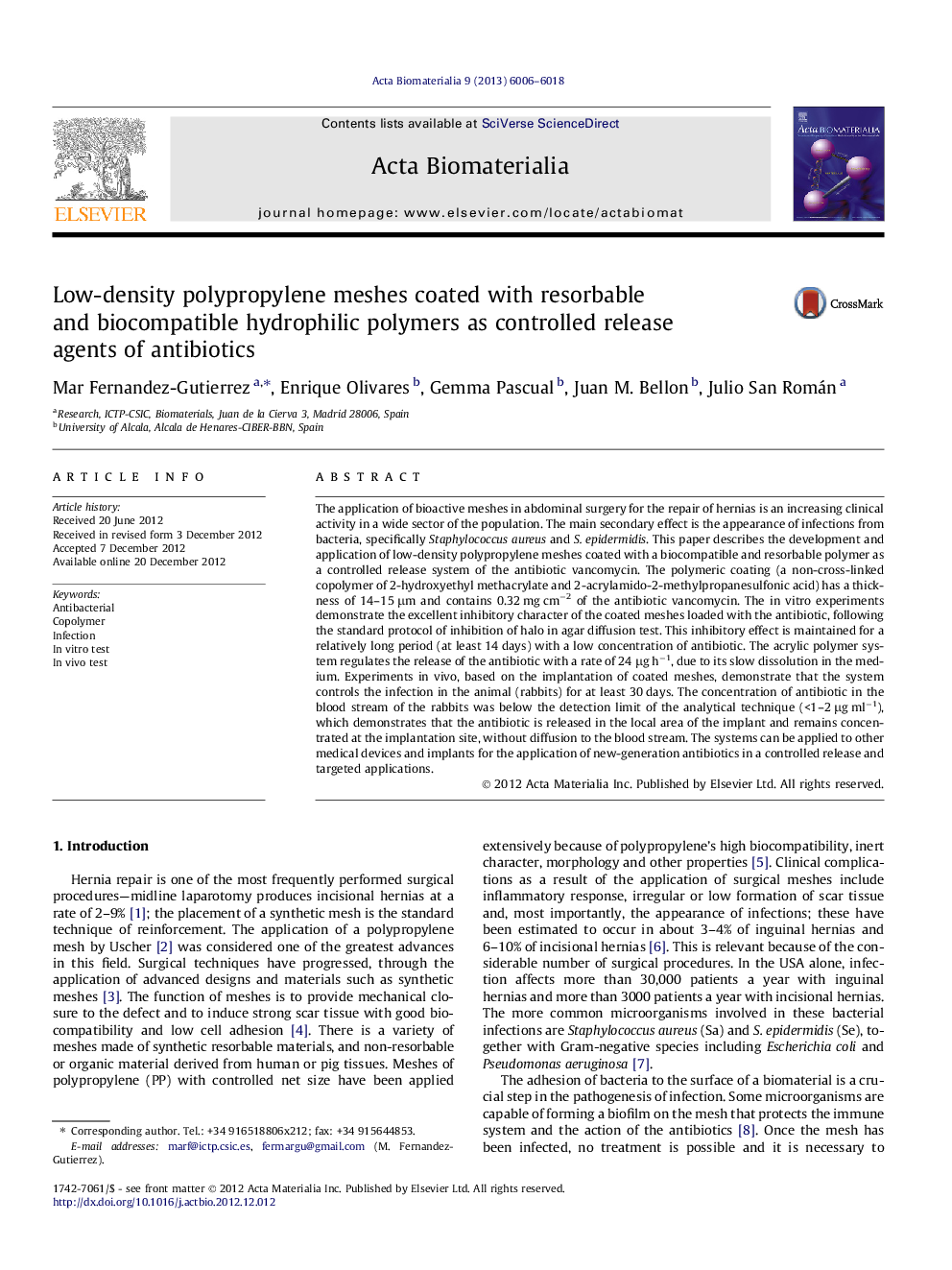| Article ID | Journal | Published Year | Pages | File Type |
|---|---|---|---|---|
| 10159845 | Acta Biomaterialia | 2013 | 13 Pages |
Abstract
The application of bioactive meshes in abdominal surgery for the repair of hernias is an increasing clinical activity in a wide sector of the population. The main secondary effect is the appearance of infections from bacteria, specifically Staphylococcus aureus and S. epidermidis. This paper describes the development and application of low-density polypropylene meshes coated with a biocompatible and resorbable polymer as a controlled release system of the antibiotic vancomycin. The polymeric coating (a non-cross-linked copolymer of 2-hydroxyethyl methacrylate and 2-acrylamido-2-methylpropanesulfonic acid) has a thickness of 14-15 μm and contains 0.32 mg cmâ2 of the antibiotic vancomycin. The in vitro experiments demonstrate the excellent inhibitory character of the coated meshes loaded with the antibiotic, following the standard protocol of inhibition of halo in agar diffusion test. This inhibitory effect is maintained for a relatively long period (at least 14 days) with a low concentration of antibiotic. The acrylic polymer system regulates the release of the antibiotic with a rate of 24 μg hâ1, due to its slow dissolution in the medium. Experiments in vivo, based on the implantation of coated meshes, demonstrate that the system controls the infection in the animal (rabbits) for at least 30 days. The concentration of antibiotic in the blood stream of the rabbits was below the detection limit of the analytical technique (<1-2 μg mlâ1), which demonstrates that the antibiotic is released in the local area of the implant and remains concentrated at the implantation site, without diffusion to the blood stream. The systems can be applied to other medical devices and implants for the application of new-generation antibiotics in a controlled release and targeted applications.
Related Topics
Physical Sciences and Engineering
Chemical Engineering
Bioengineering
Authors
Mar Fernandez-Gutierrez, Enrique Olivares, Gemma Pascual, Juan M. Bellon, Julio San Román,
